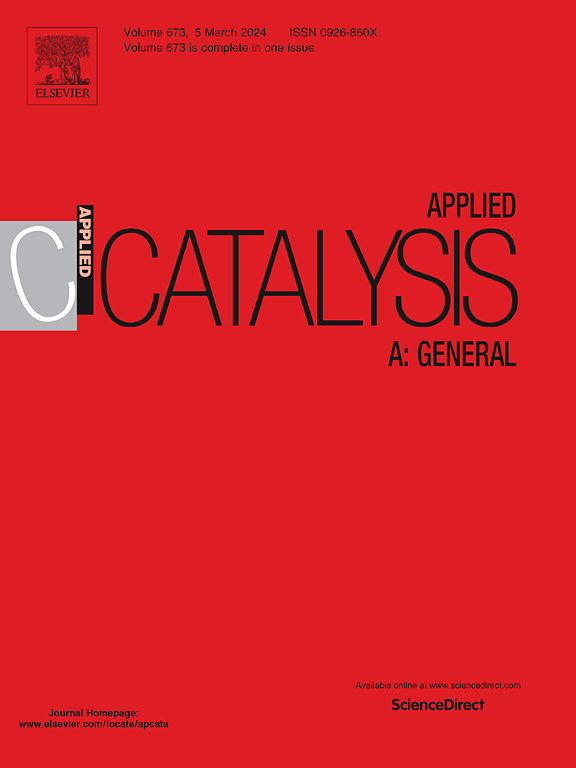Porous organic polymers based on benzothiazole or benzimidazole for photocatalytic synthesis of hydrogen peroxide in pure water
IF 4.7
2区 化学
Q2 CHEMISTRY, PHYSICAL
引用次数: 0
Abstract
Developing photocatalysts featuring appropriate active sites and bandgaps for sustainable photocatalytic production of hydrogen peroxide (H2O2) remains a major challenge. Herein, novel porous organic polymers (denoted as SZ and MZ) based on benzothiazole and benzimidazole were constructed and utilized for photocatalytic production of H2O2 by virtue of their excellent photovoltaic properties and chemical stability. Under simulated sunlight, SZ exhibited noteworthy photocatalytic performance with a H2O2 production rate of 3109 μmol g−1 h−1 in water without sacrificial agent, and maintained high catalytic efficiency after six consecutive reactions. Similarly, MZ demonstrated an H2O2 production rate of 2700 μmol g−1 h−1. Furthermore, the mechanism of photocatalytic production of H2O2 by benzothiazole porous organic polymers (POPs) was further investigated, and the superiority of photocatalytic production of H2O2 by one-step two-electron oxygen reduction process was verified.
基于苯并噻唑或苯并咪唑的多孔有机聚合物在纯水中光催化合成过氧化氢
开发具有适当活性位点和带隙的光催化剂以实现过氧化氢(H2O2)的可持续光催化生产仍然是一个重大挑战。本文构建了基于苯并噻唑和苯并咪唑的新型多孔有机聚合物(记为SZ和MZ),并利用其优异的光伏性能和化学稳定性用于光催化生产H2O2。在模拟光照条件下,SZ在无牺牲剂的水中H2O2产率为3109 μmol g−1 h−1,具有良好的光催化性能,连续6次反应后仍保持较高的催化效率。同样,MZ的H2O2产率为2700 μmol g−1 h−1。进一步研究了苯并噻唑多孔有机聚合物(POPs)光催化生产H2O2的机理,验证了一步双电子氧还原法光催化生产H2O2的优越性。
本文章由计算机程序翻译,如有差异,请以英文原文为准。
求助全文
约1分钟内获得全文
求助全文
来源期刊

Applied Catalysis A: General
化学-环境科学
CiteScore
9.00
自引率
5.50%
发文量
415
审稿时长
24 days
期刊介绍:
Applied Catalysis A: General publishes original papers on all aspects of catalysis of basic and practical interest to chemical scientists in both industrial and academic fields, with an emphasis onnew understanding of catalysts and catalytic reactions, new catalytic materials, new techniques, and new processes, especially those that have potential practical implications.
Papers that report results of a thorough study or optimization of systems or processes that are well understood, widely studied, or minor variations of known ones are discouraged. Authors should include statements in a separate section "Justification for Publication" of how the manuscript fits the scope of the journal in the cover letter to the editors. Submissions without such justification will be rejected without review.
 求助内容:
求助内容: 应助结果提醒方式:
应助结果提醒方式:


